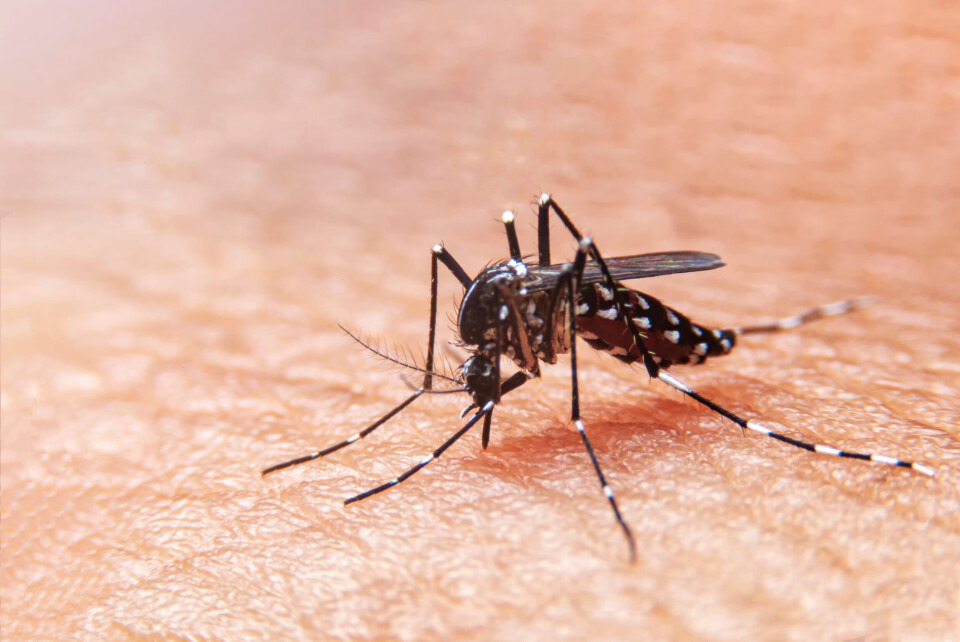-
French ski resorts report excellent Christmas despite less snow than last year
Bookings are up and non-snow related activities are also on the rise
-
American celebrity jeweller robbed of ‘more than €1m’ at French Riviera Airbnb
Jewellery and cash stolen from rental property where Chris Aire was staying
-
New 2026 civic tests in France: 50 example questions in French
Candidates must score 80% on tests to pass
France sees surge in indigenous dengue cases as climate warms
Some 63 people have been infected in France – without travelling abroad – this summer, compared to 14 for the whole of 2020

France has this year experienced an unusually high number of dengue infections, as tiger mosquito populations proliferate across the country.
By October 4, 63 ‘indigenous’ cases of dengue fever had been reported in the country over the summer, compared to 14 cases in the whole of 2020. This year’s total is more than the number recorded for the last decade in France.
Health authority Santé publique France monitors dengue cases between May 1 and November 30 each year.
Indigenous cases involve people who had not been infected while travelling abroad, but rather contracted the virus in France.
This happens when someone infected while abroad is bitten by a mosquito in France, which then begins carrying the virus and spreads it by biting someone else.
Read more: New dengue fever case in France, victim had not travelled to risk area
Until now, the majority of dengue cases have been linked to international travel, and the largest French outbreak was in 2015, when eight people caught the virus in Nîmes.
Read more: France warns of increased risk of dengue fever from tiger mosquitoes
Creeping northwards
One factor that helps to explain the rise in indigenous infections is the fact that people are beginning once again to travel to destinations where dengue is common after the end of Covid restrictions.
Another reason is that the tiger mosquito – which transmits the virus – is establishing itself in an increasingly extensive area of France, having permanent populations in 67 departments according to the Direction générale de la santé.
“This mosquito, like most insects, is cold-blooded, incapable of regulating its internal temperature, and so it will move more easily towards warm, humid environments,” Anna-Bella Failloux, Institut Pasteur entomologist, told TF1.
“With the rise in temperatures [in France], it now has a much bigger playground. Under these conditions, there are not only more of them, but they survive better. In addition, it is highly anthropophilic, meaning that it will use human activity, and most notably our movements, to spread.
“It is for this reason that it is heading further and further towards the north of France.”
Most of this year’s dengue cases have been detected in Provence-Alpes-Côte d’Azur and Occitanie, with around half of all cases concentrated in Alpes-Maritimes.
Didier Fontenille of the Institute of Research for Development in Montpellier, told The Telegraph: “Within four or five years, all France will live with the mosquito. It’s only a matter of time before it colonises the UK. Ten years at most.”
The insects have already been sighted six times in south east England since 2016.
Tiger mosquitos have already been seen or have become established in 30 European countries, and Oxford University research suggests that the species is moving 93 miles north each year.
What are the symptoms of dengue?
The dengue virus causes flu-like symptoms like fevers, headaches, muscle aches and nausea, which begin to manifest between three and 14 days after the mosquito bite.
The infection normally clears up on its own, and there is no specific cure or treatment. Health authorities recommend taking paracetamol to relieve the pain, and not aspirin or ibuprofen, as they can cause bleeding problems.
Symptoms should begin to abate after about a week, but you should seek medical attention if they are still there after two weeks.
In some rare cases, dengue can be very serious or life threatening. This is known as severe dengue or dengue haemorrhagic fever.
These forms of the disease are most common in people who have already had the virus before.
Signs include severe stomach pain, a swollen tummy, vomiting blood, bleeding gums or bleeding under the skin, breathing difficulties, clammy skin and drowsiness.
If you experience these symptoms, you should call the emergency services or go to A&E.
How to avoid catching dengue
To limit your risk of being infected with dengue, you must avoid being bitten by tiger mosquitos.
If you have a house in France, you should make sure that any receptacles around the building which could store standing water – like plant pots for example – are emptied, wear clothes covering as much skin as possible, use repellent and perhaps install screens on your doors and windows.
France’s health ministry has said that mosquito control operations are launched in areas where indigenous cases are discovered.
Read more: Mosquito screen reinvented by French couple after mesh misery abroad
Local initiatives
In Lot, for example, the town of Cahors has hired an agency to identify the places where tiger mosquitos gather and suggest ways to reduce their population.
The local authority is trying to encourage swifts and bats to settle in the area, as both hunt this type of mosquito. Goldfish also eat their larvae, and so they have been introduced into one of the town’s park ponds.
In Provence, scientists are also spraying mosquito hotspots with insecticide.
A tiger mosquito was first spotted in France in 2004, near the Italian border. These insects can also spread chikungunya and Zika.
You can find out more about the current situation in France through the Santé publique website.
Related articles
Rare case of ‘indigenous’ dengue confirmed in south of France
























